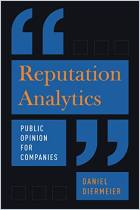In a post-Internet world, public relations (PR) departments’ assignments have broadened considerably, British PR expert Anne Gregory writes in this overview. With employees posting their own content to Facebook, Twitter and LinkedIn, an organization’s public relations director no longer fully controls the company’s message. And yet the message matters now more than ever – an organization’s market capitalization can hinge on whether consumers and investors buy its branding and reputational efforts. Gregory walks through the theory and practice of modern-day public relations and presents useful case studies.
Public relations has moved front and center in corporate value propositions.
The success of a modern corporation no longer revolves solely around making money. Organizations also must define and communicate their corporate values. This is the new era of corporate character – a catch-all category that includes a company’s mission, brand, social commitment and underlying purpose. While branding was once the purview of the marketing department, and human resources owned corporate culture, the new model defines corporate character as extending to all parts of an organization.
The discipline of public relations focuses on burnishing a company’s reputation, with the understanding that organizations cannot build trust quickly. Building goodwill takes repetition and deliberate effort. A company’s public image affects its overall success. An organization with a stellar reputation is more appealing to the consumers, employees and investors. A company that falls short on the public relations front will have to win back customers, investors and potential employees.
The reality of public relations has changed in recent years...
Anne Gregory is a professor of corporate communication at the University of Huddersfield. She has years of corporate PR experience, and remains a consultant and adviser to a number of large organizations.

















Comment on this summary or Iniciar a Discussão